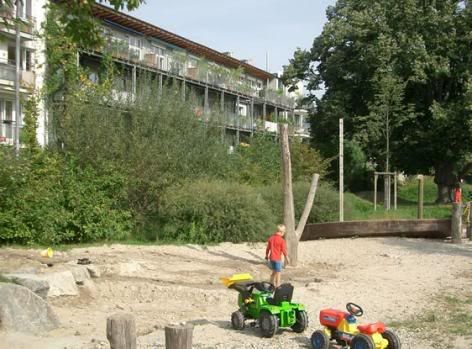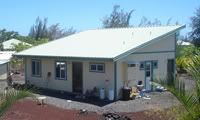Introduction to Vauban, Freiburg
The Quartier Vauban is a sustainable neighborhood of 5,000 residents in the southwestern German city of Freiburg in Breisgau – a historic college town of 225,000 residents. Planning for the neighborhood began in 1993 and development was largely completed in 2006. The 84-acre neighborhood is located on the southern border of the city, two miles from the historic Old Town.
The Quartier Vauban represents the state of the art in environmental protection in terms of transportation, alternative energy production, and sustainable construction techniques. All of the houses within the neighborhood are engineered to adhere to low energy consumption standard and transportation revolves around the town’s tramway, as 40% of residents have agreed to not own cars and those who do own them, leave them at the edge of town.
The Quartier Vauban is a sustainable neighborhood of 5,000 residents in the southwestern German city of Freiburg in Breisgau – a historic college town of 225,000 residents. Planning for the neighborhood began in 1993 and development was largely completed in 2006. The 84-acre neighborhood is located on the southern border of the city, two miles from the historic Old Town.
The Quartier Vauban represents the state of the art in environmental protection in terms of transportation, alternative energy production, and sustainable construction techniques. All of the houses within the neighborhood are engineered to adhere to low energy consumption standard and transportation revolves around the town’s tramway, as 40% of residents have agreed to not own cars and those who do own them, leave them at the edge of town.

Above : Houses with photvoltaic cells on their roofs
History
After World War II, the Allied powers divided Germany into four quadrants. For over forty years, French Army soldiers were stationed at the Vauban barracks on the southern edge of Freiburg. In 1992, the last French troops left the Vauban barracks and ownership reverted to the federal government of Germany. The German government sold the 84-acre property to the City of Freiburg for 40 million DM (approximately 15 million US Dollars in the early 1990s).
After World War II, the Allied powers divided Germany into four quadrants. For over forty years, French Army soldiers were stationed at the Vauban barracks on the southern edge of Freiburg. In 1992, the last French troops left the Vauban barracks and ownership reverted to the federal government of Germany. The German government sold the 84-acre property to the City of Freiburg for 40 million DM (approximately 15 million US Dollars in the early 1990s).

Above : Children's play area
The City created a development corporation to plan the site, prepare infrastructure and market the project. Roland Veith, the project director for the City’s development corporation said that the French troop departure was like finding land the City didn't even know it had.[1] Since Freiburg was experiencing a severe housing shortage at the time, it was determined that the property would be used to develop a new residential neighborhood.
Next : Go to The Planning Process













0 comments
Post a Comment